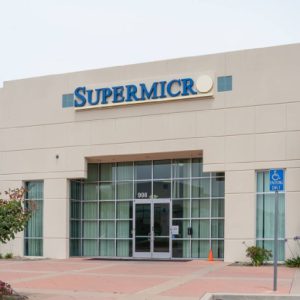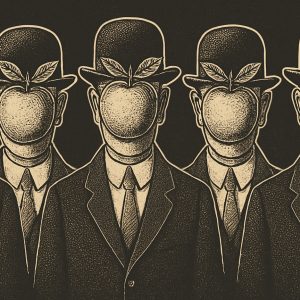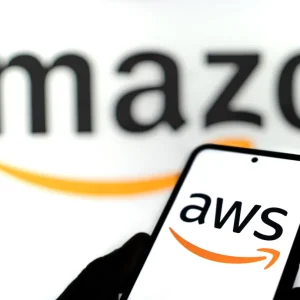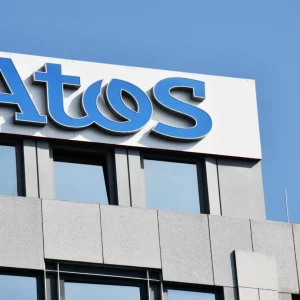January: After months of pres sure from the industry, AT&T Co chose the start of the year to begin the process of distancing its Unix develop ment activities from its com mercial computing business, spinning out the operating system into the charge of a new division, the Unix Soft ware Operation. Meanwhile in the opposing camp, the Open Software Foundation was flourishing, and made its final choice of technologies for its Motif graphical user interface, choosing a combin ation of the submissions from DEC and Hewlett-Packard. Visix Software Inc introduced the Looking Glass user inter face manager, set to clash head on with X.desktop from UK rival IXI Ltd of Camb ridge. DEC confirmed its increasingly serious Unix aspirations by launching a new line of non-VAX workstat ions running Ultrix and using the MIPS Computer Systems Inc RISC processor. And young workstation pretender Sol bourne Computer Inc, a front for Matsushita Electric Ind ustrial Co of Japan, threw down a challenge to Sun Microsystems with the first Sparc-based systems outside of Sun’s own. Another start up, Network Computing Devices Inc, came out with early examples of a new class of intelligent terminal based on the X Window System and dub bed X-Stations – many more were to follow throughout the year. Prime Computer Inc was still battling against a hos tile takeover bid from MAI Basic Four Inc, while UK Unix house Sphinx Ltd was reported to have been put up for sale.
February:
AT&T had to work hard to regain industry confidence in its future plans for Unix after the Open Software Foun dation was formed in 1988, and this month 46 of its sup porters formally announced Unix International, to plot the future course of Unix in conjunction with the Unix Software Operation. By now, MIPS Computer Systems was on a roll that was to last all year, introducing new syst ems, signing up Siemens and NEC to fabricate its RISC processors, and signing up Sony Corp to use its chip in the face of competition from Motorola’s 88000 and Sun’s Sparc. After handing Xenix to the Santa Cruz Operation a couple of years ago, Micro soft bought back into the Unix business by acquiring a substantial stake in the com pany. Pyramid Technology Corp revealed its challenge to the mainframe market with a multi-processor system rated at 140 MIPS running Unix, whilst Amdahl released version 2 of its Unix-compat ible UTS operating system. Unisys continued its spending spree by signing a $250m OEM deal with Sequent Computer Systems Inc, while Norsk Data began its rush into Unix fol lowing big financial losses.
March:
The UniForum trade show in San Francisco saw previ ously stubborn open systems opponent Data General begin to fightback with its first RISC-based Motorola 88000 AViiON workstations, and DEC’s showstopper was a mul ti-user version of its new DECstation line. Intel caused a stir with its 80860 RISC processor, claiming that workstation vendors that had already chosen their next generation of CPUs would now think again. AT&T, Olivetti, Prime and Convergent began work on a multi-processing version of Unix for Intel processors – and rashly prom ised it for the end of the year. AT&T hoped to steal a yard on the Open Software Foundation’s Motif interface by shipping source code for its Open Look graphical user interface. Santa Cruz Oper ation – with a little help from its friends announced a desktop graphics and data base bundle for Unix called Open Desktop at less than $1,000 in a challenge to OS/2. The Japanese Nippon Mining Co sold Gould Comput er Systems to Encore Computer Corp – but Gould had to lend Encore $140m to do the job – while minisuper makers Cy drome Inc and Scientific Com puter Systems fell under mar ket pressure, and the oper ating systems vendor Micro port Inc was put up for sale.
April:
Intel Corp’s predictions for the 80860 seemed to be borne out as Stratus Computer Systems Inc changed tack and abandoned Motorola’s 88000 in favour of the new chip – but Motorola shrugged it off by attempting to steal the thun der of Intel’s much-awaited 80486 launch with a preview o
f its own 68040 processor – it’s still not formally ann ounced, while Tektronix launched its 88000-based XD88 workstation line. Sun Micro systems held its first major hardware launch for a year, with a blitz of new Sparc and Motorola-based systems, but again this was somewhat over shadowed by the news that Hewlett-Packard had put in an agreed bid for workstation pioneer Apollo Computer for $476m – pushing it ahead of Unisys and just behind DEC in size. Franco-Italian giant SGS-Thomson Microelectronics bought up the UK’s promising Transputer technology with the acquisition of Inmos In ternational. But while Control Data was shutting down its ETA supercomputer business, stirrings at the low-end of the market looked more encouraging, with mass- market dealerships for Bus inessland and MicroAge for IBM’s AIX systems, newly an nounced for the PS/2. Bus inessland also took the NeXT computer from Steve Jobs. The Open Software Foundation issued its second Request for Technology for a method of distributing software in a single hardware-independent format. Following the virus scares at the end of 1988, trusted Unix grew hot, with Addamax and SecureWare offer ing new secure operating sys tems technology. Pegasus Group stepped in as the last minute buyer for Sphinx.






